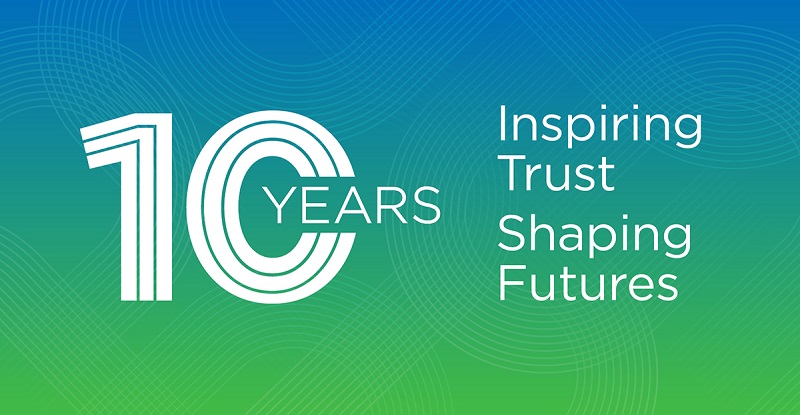
Research shows that diversity is a driver of business success
Increasingly, the business world is recognizing the importance of diversity in the workplace—not just in terms of optics but also in terms of the bottom line. So why do some businesses still consider diversity as an option (or, worse still, a last resort when all other options fail) when others already recognize that it’s an indispensable factor in hiring? What’s behind all the diversity buzz, and what’s keeping some employers from jumping on the diversity train?
Diversity is a business imperative
A wealth of research over the last decade indicates that diversity—be it cultural, ethnic, racial, generational, gender, thought, experiential, or other—is fundamentally good for business. “Non-homogenous teams are simply smarter,” say David Rock and Heidi Grant of the NeuroLeadership Institute. “Working with people who are different from you may challenge your brain to overcome its stale ways of thinking and sharpen its performance.”
Citing findings from several recent studies, the pair note that diverse groups are more likely to:
- Raise more relevant facts and make fewer factual errors while discussing available evidence;
- Re-examine facts while scrutinizing behaviour and maintaining objectivity to mitigate against potential biases;
- Process and digest information carefully; and
- Innovate and develop new products.
Rock and Grant also reference Diversity Matters, a report released by McKinsey & Company (McKinsey) in February 2015 that shows an undeniable correlation between financial performance and diversity levels (defined as a greater share of women and a more mixed ethnic/racial composition in the leadership of large companies). After examining proprietary data sets for 366 public companies across a range of industries in Canada, Latin America, the United Kingdom, and the United States in 2014, researchers found that:
- Companies in the top quartile for racial/ethnic diversity at the executive level were 35% more likely to have financial returns above their respective national industry medians;
- Companies in the top quartile for gender diversity at the executive level were 15% more likely to have financial returns above their respective national industry medians;
- Companies in the bottom quartile for both gender and racial/ethnic diversity were statistically less likely to achieve above-average financial returns than the average companies in the data set; and
- The unequal performance of companies in the same industry and the same country implies that diversity is a competitive differentiator.
McKinsey’s updated research in this area further supports the connection between diversity and financial performance. In 2017, the researchers expanded their data set to encompass more than 1,000 companies across 12 countries and measured not only profitability but also longer-term value creation.
They also explored diversity at different organizational levels and broadened the definition of diversity beyond gender and race/ethnicity.
Here are some of the key findings from the study, which was released in 2018:
- Gender diversity on executive teams strongly correlated to profitability and value creation. In fact, for gender, the executive team showed the strongest correlation, with the percentage rising to 21% in 2017 (up from 15% in 2014).
- Executive teams of top-performing companies had more women in line roles (core business) versus staff roles (advisory and support), yet even among top-quartile companies, women executives were more likely to occupy staff roles than line roles.
- Companies with the most ethnically diverse executive teams were 33% more likely to outperform on profitability (down slightly from 35% in 2014, but still significant).
- Although gender and ethnic diversity clearly correlated to profitability, women and minorities remained underrepresented at the executive level.
Cognitive biases are holding employers back
Many challenges, obstacles, and misunderstandings in the workplace (and in life in general) can be traced back to cognitive biases. And most of the time, we’re not even aware of their existence, given that approximately 95% of our decisions and behaviours are controlled by unconscious thought. Thankfully, once we become aware of these biases, we can take action to address them with conscious behaviour. Awareness, as they say, is key.
Two cognitive biases, in particular, can stifle diversity initiatives in the workplace. The first is the assumption that an “easy” decision-making environment is inherently more successful and more productive. In reality, research shows that homogeneity can lead to a false sense of progress and that “working on diverse teams produces better outcomes precisely because it’s harder.”
The second cognitive bias is an overestimation of the level of conflict that exists on diverse teams. Tied to this misperception is the belief that diverse teams are less productive. This cognitive bias is understandable, as executives and managers are tasked with the responsibility of mitigating risk, and—let’s be honest—diversity does present some risk factors, including the potential for conflict, friction, resentment, and culture clash.
Fear of this conflict can lead to intense resistance. It may also explain why employers and hiring managers typically hire the candidates they find most relatable or who seem most in tune with the company’s existing culture. Beware, however—while the effort to create a harmonious team may come from a good place, it can actually be bad for business. Put simply, there can be such a thing as too much harmony.
How to increase diversity
It’s clear from the research that diversity is beneficial for teams, organizations, and the bottom line. So how can organizations overcome cognitive biases and other barriers to diversity?
The authors of the 2018 McKinsey study referenced earlier identified some of the common strategies used by top-performing companies to increase inclusion and diversity (I&D). These companies:
- Developed and committed themselves to I&D strategies that supported the business ethos and priorities;
- Communicated and “cascaded” their commitment to I&D throughout the organization, particularly to middle management;
- Conducted internal research to identify the I&D priorities best aligned to business growth strategies;
- Used targeted thinking to prioritize the I&D initiatives in which to invest; and
- Tailored I&D strategies to different parts of the business, recognizing that there may be no “one-size-fits-all” strategy, especially if the organization has global operations.
Ways to increase diversity were also identified by a separate research team in the 2015 paper, Maximizing the Gains and Minimizing the Pains of Diversity: A Policy Perspective. In addition to studying the positive impact of diversity on decision-making, innovation, and economic growth, the authors identified methods to remove barriers to diversity and opportunity. Transparency, they found, is key: “Transparency can be used at multiple levels to root out bias and discrimination and to increase diversity, fairness, and equity.”
We need to get comfortable with discomfort
The landscape of business will always be changing—that’s a given. Hiring diverse teams will increase any organization’s adaptability, which, in turn, will enable it to stay on track.
Of course, the ability to harness the power of diversity depends on the ability to manage it effectively, but that’s a topic for another time. Until then, we hope this article has given you some food for thought.
Suzanne Berry is the career advisor for CPABC.
Originally published in the May/June 2019 issue of CPABC in Focus.


